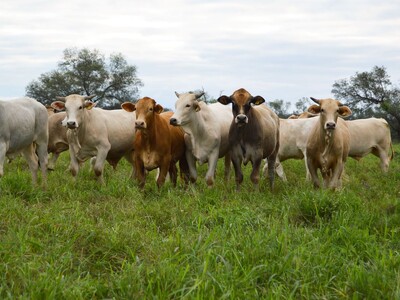Missing Market Reports
Five agencies within USDA publish regular reports: Agricultural Marketing Service, Foreign Agricultural Service, National Agricultural Statistics Service, Economic Research Service and the World Agricultural Outlook Board.AMS is the only agency of the five that has continued publishing reports during the partial government shutdown that has most of USDA shuttered. In fact, AMS has published 1,258 Market News reports during the shutdown. Select AMS reports have continued to be published for a host of reasons. Some are supported by user fees, such as the Cotton Classification report, which is funded under a provision in the Cotton Futures Act. Some are essential for export sales, such as the Federal Grain Inspection Service's Grain Inspection Report, while others comprise the major source of market information for an industry, such as the Market News Reports on livestock pricing data. Beyond, AMS, however, since the shutdown began on Dec. 22 through the close of business on Jan. 24, a total of 62 reports from NASS, FAS and ERS have gone unpublished. The agency with the largest number of forgone reports is NASS with 32 reports, followed by ERS with 22 reports and FAS with 8 reports:
The report that's likely missed by the most is the January World Agricultural Supply and Demand Estimates, which is a product of WAOB and released by ERS. The report would have contained updated expectations on supply and use for grains, oilseeds and cotton for the 2017/2018 marketing year for both the U.S. and international markets. While the industry probably has a good handle on the U.S. numbers at this point in the marketing year, foreign production and demand is a different story. The domestic markets closely watch USDA's estimates of production in competitor markets, many of which are currently fully immersed in their growing seasons. While the governments of other countries publish production data, the unbiased market signals set by USDA are better known and far preferred.
Beyond the WASDE, ERS hasn't released planned yearly outlook reports for oil crops, cotton, feed, rice sugar, wheat, livestock, dairy and poultry; annual yearbook data for grains, fruits and vegetables; season average price forecasts; bioenergy statistics; and the latest U.S. agricultural trade data, among other topics. Many of these datasets have been collected for years, which allows the industry to tease out trends across months and years. These reports analyze the major changes and events in the market for the respective products, without which we have a less clear idea of where production, usage and prices may be headed.
Eight reports from FAS have now gone unpublished, including three weeks of export sales reports, global reports on cotton, grains and oilseeds, and a citrus report, which is only published twice per year. The global reports include the monthly data on U.S. and global trade, production, consumption and stocks that are included in the WASDE, as well as in-depth analysis of developments affecting world trade in various commodities. The export sales reports are critical to tracking weekly sales, decreases and changes of destination for wheat, cotton, feed grains, rice, beef, pork, hides and skins and oilseeds. Given the current trade environment, these reports were extremely closely watched by farmers and traders alike before the shutdown.
A whopping 32 reports have gone unpublished by NASS since the shutdown began. Some of the reports are weekly reports, like the Broiler Hatchery Report. Others, like the Cold Storage report, are published monthly. Still others, like the Winter Wheat and Canola Seedings report, are only published annually. The data in these reports provide producers throughout the supply chain with granular level data that assists in understanding the direction of the market.
Once the government shutdown ends, data from some of these reports will become available, since it is procured by survey from private producers, processors and exporters, who have still been operating during the shutdown.
Some of the data, however, will never be available. For example, the missed WASDE report and the data that would have come from it will never be published. This is because the WASDE is the product of collaboration among USDA experts across WAOB, FAS and ERS who read market signals and analyze data at a specific point in time to give their best estimates of supply and demand. Since those experts were unable to meet and the market has shifted since, it wouldn't make sense to create and then publish that report after the fact. This will make year-over-year comparisons difficult to complete in subsequent years.
The longer the shutdown, the more missed reports. The longer we are without current market intelligence, the more challenging it will be for producers and economists to predict where the market is headed. Further, the longer the shutdown stretches, the more likely it will be that the publication dates of future reports, like the Census of Agriculture, which is due to be published on Feb.21, will be delayed.


















